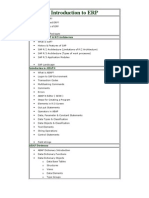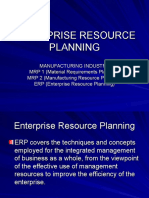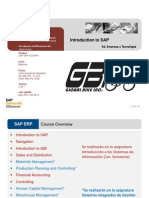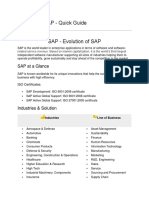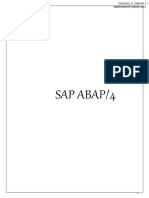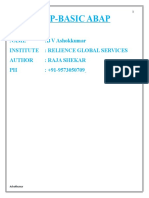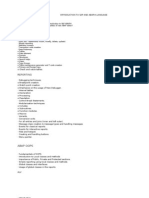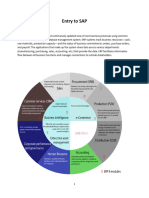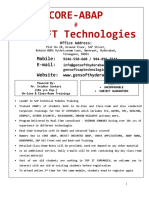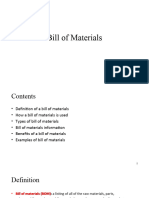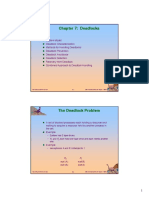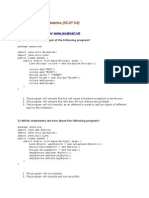0% found this document useful (0 votes)
100 views20 pagesNotes On ABAP Course
The ZaranTech course on SAP ABAP programming provides comprehensive training from basics to advanced topics, including syntax, data types, and programming best practices. It emphasizes the importance of ERP systems and SAP's role in enhancing business processes through effective application development. By the end of the course, participants will be equipped to create custom SAP solutions and understand the underlying architecture and data management principles in ABAP.
Uploaded by
muhammadumarhassan476Copyright
© © All Rights Reserved
We take content rights seriously. If you suspect this is your content, claim it here.
Available Formats
Download as DOCX, PDF, TXT or read online on Scribd
0% found this document useful (0 votes)
100 views20 pagesNotes On ABAP Course
The ZaranTech course on SAP ABAP programming provides comprehensive training from basics to advanced topics, including syntax, data types, and programming best practices. It emphasizes the importance of ERP systems and SAP's role in enhancing business processes through effective application development. By the end of the course, participants will be equipped to create custom SAP solutions and understand the underlying architecture and data management principles in ABAP.
Uploaded by
muhammadumarhassan476Copyright
© © All Rights Reserved
We take content rights seriously. If you suspect this is your content, claim it here.
Available Formats
Download as DOCX, PDF, TXT or read online on Scribd
/ 20









